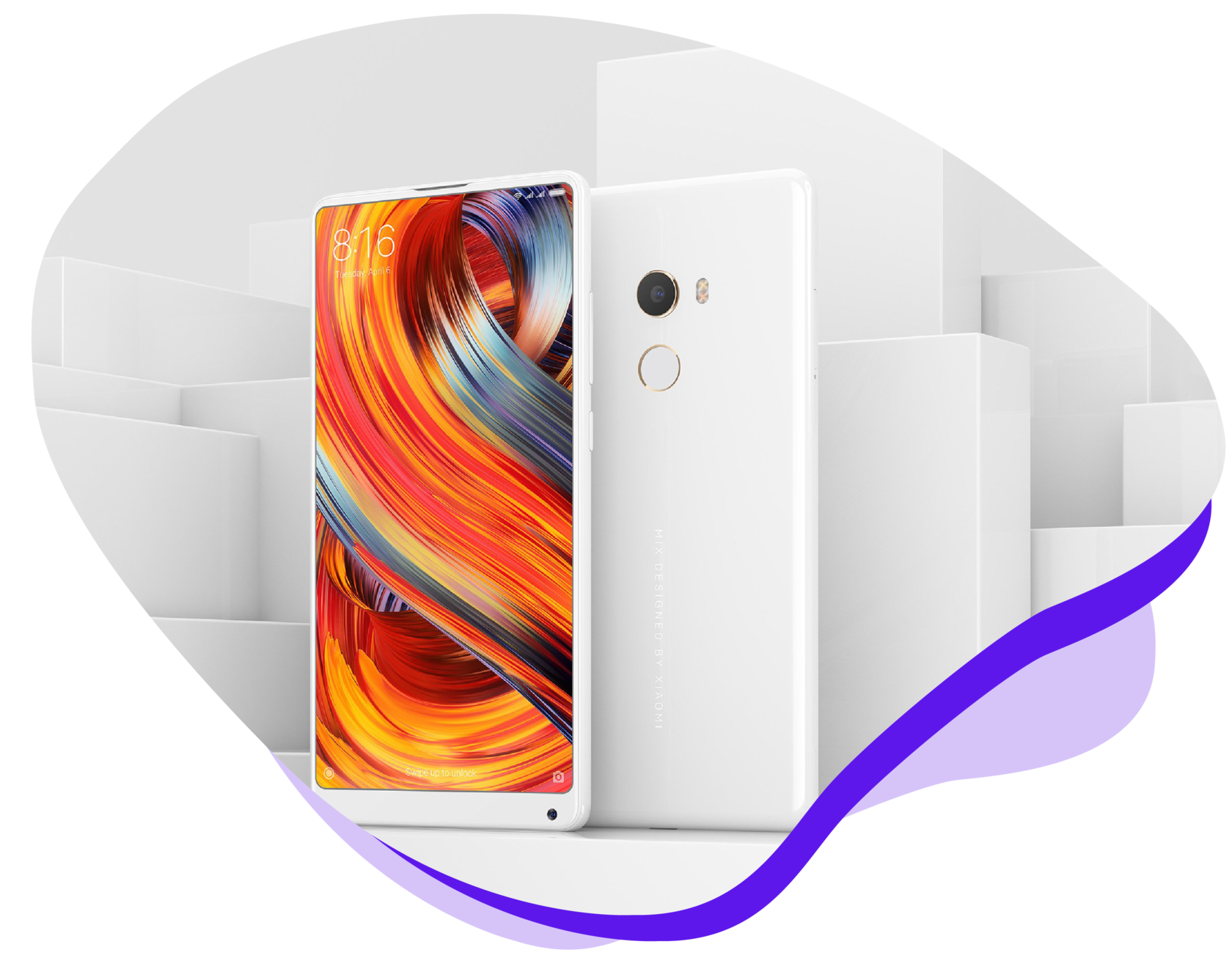Aim, tasks
► Advertising support for the sale of Redmi S2 and Redmi 5 smartphones in the DNS supermarket chain.
►Xiaomi, together with the DNS store chain, launched a weekly promotion: when buying a smartphone of one model, another smartphone as a gift. It was necessary to launch an advertising campaign on the Internet. We aimed to:
- To increase the recognition of DNS as one of the main sales channels of Xiaomi in Russia.
- Increase sales of Redmi S2 and Redmi5 in DNS.
- Attract traffic to the DNS site in anticipation of the launch of new Xiaomi models.
►Xiaomi, together with the DNS store chain, launched a weekly promotion: when buying a smartphone of one model, another smartphone as a gift. It was necessary to launch an advertising campaign on the Internet. We aimed to:
- To increase the recognition of DNS as one of the main sales channels of Xiaomi in Russia.
- Increase sales of Redmi S2 and Redmi5 in DNS.
- Attract traffic to the DNS site in anticipation of the launch of new Xiaomi models.
TOOLS
► Contextual advertising in Yandex and Google.
► Targeted advertising on social networks.
► Targeted advertising on social networks.
Results achieved
► The actual number of clicks in Yandex and Google increased by 111% and exceeded the planned.
► The actual cost per click was 71% lower than planned
► 8.4 million users — the total coverage of the advertising campaign in all social networks
► 5.5 million impressions in VKontakte
► 17% of sales were provided by transitions from Instagram
►3000 smartphones sold
► 7.8 million total sales turnover
► The actual cost per click was 71% lower than planned
► 8.4 million users — the total coverage of the advertising campaign in all social networks
► 5.5 million impressions in VKontakte
► 17% of sales were provided by transitions from Instagram
►3000 smartphones sold
► 7.8 million total sales turnover
Detailed description
1. Contextual advertising
To attract an audience with an already formed need, we have connected contextual advertising in Yandex search and Google, the Yandex advertising network and the Google display network.
The following were selected as queries:
- "smartphones";
- "buy a smartphone";
- "buy an inexpensive smartphone," etc.
At the same time, the product banners were changed in accordance with seasonal demand and customer needs.
2. Advertising on social networks
In parallel, we launched targeted advertising on VKontakte, Facebook, and Odnoklassniki. In the targeting settings, we noted users who were interested in inexpensive gadgets and smartphones.
This was the essence of the strategy: we needed fans of budget devices. Therefore, owners and fans of iPhone, Samsung and other luxury brands were excluded from the sample, since they are unlikely to be attracted to Xiaomi products.
How it looked in targeting:
People who are interested in tablets and smartphones, except for owners of iPhone 6S, iPhone 7, iPhone 7 Plus, Galaxy S8, Galaxy S8+, Galaxy S9, etc.
Parents have become another segment of the target audience. The action took place in August, before the start of the school year. We launched an advertising message "You buy a smartphone, you get another one for the child." Not all parents are ready to buy an iPhone for a student — they will lose it or break it. The offer to upgrade your smartphone and get a gadget for a child as a gift looked attractive.
3. RTB using Sociomantic technology
Sociomantic Labs, a division of Dunnhumby, provides RTB advertising technology that allows you to find the target audience on the network as accurately as possible and show them banners.
Sociomantic cooperates with many large retailers, including the DNS hardware store chain. Sociomantic code is installed on the store's pages, which tracks users visiting specific catalog pages in real time.
Step 1. The buyer looked at the products in the category "Smartphones" on the DNS website and left without buying anything.
Step 2. We followed the user on the "digital trail" and showed Xiaomi branded banners on other sites connected to RTB sites.
Step 3. Potential customers clicked on the banner and got to the Xiaomi page, where they could read the terms of the promotion and complete the purchase.
To attract an audience with an already formed need, we have connected contextual advertising in Yandex search and Google, the Yandex advertising network and the Google display network.
The following were selected as queries:
- "smartphones";
- "buy a smartphone";
- "buy an inexpensive smartphone," etc.
At the same time, the product banners were changed in accordance with seasonal demand and customer needs.
2. Advertising on social networks
In parallel, we launched targeted advertising on VKontakte, Facebook, and Odnoklassniki. In the targeting settings, we noted users who were interested in inexpensive gadgets and smartphones.
This was the essence of the strategy: we needed fans of budget devices. Therefore, owners and fans of iPhone, Samsung and other luxury brands were excluded from the sample, since they are unlikely to be attracted to Xiaomi products.
How it looked in targeting:
People who are interested in tablets and smartphones, except for owners of iPhone 6S, iPhone 7, iPhone 7 Plus, Galaxy S8, Galaxy S8+, Galaxy S9, etc.
Parents have become another segment of the target audience. The action took place in August, before the start of the school year. We launched an advertising message "You buy a smartphone, you get another one for the child." Not all parents are ready to buy an iPhone for a student — they will lose it or break it. The offer to upgrade your smartphone and get a gadget for a child as a gift looked attractive.
3. RTB using Sociomantic technology
Sociomantic Labs, a division of Dunnhumby, provides RTB advertising technology that allows you to find the target audience on the network as accurately as possible and show them banners.
Sociomantic cooperates with many large retailers, including the DNS hardware store chain. Sociomantic code is installed on the store's pages, which tracks users visiting specific catalog pages in real time.
Step 1. The buyer looked at the products in the category "Smartphones" on the DNS website and left without buying anything.
Step 2. We followed the user on the "digital trail" and showed Xiaomi branded banners on other sites connected to RTB sites.
Step 3. Potential customers clicked on the banner and got to the Xiaomi page, where they could read the terms of the promotion and complete the purchase.
Click to order





